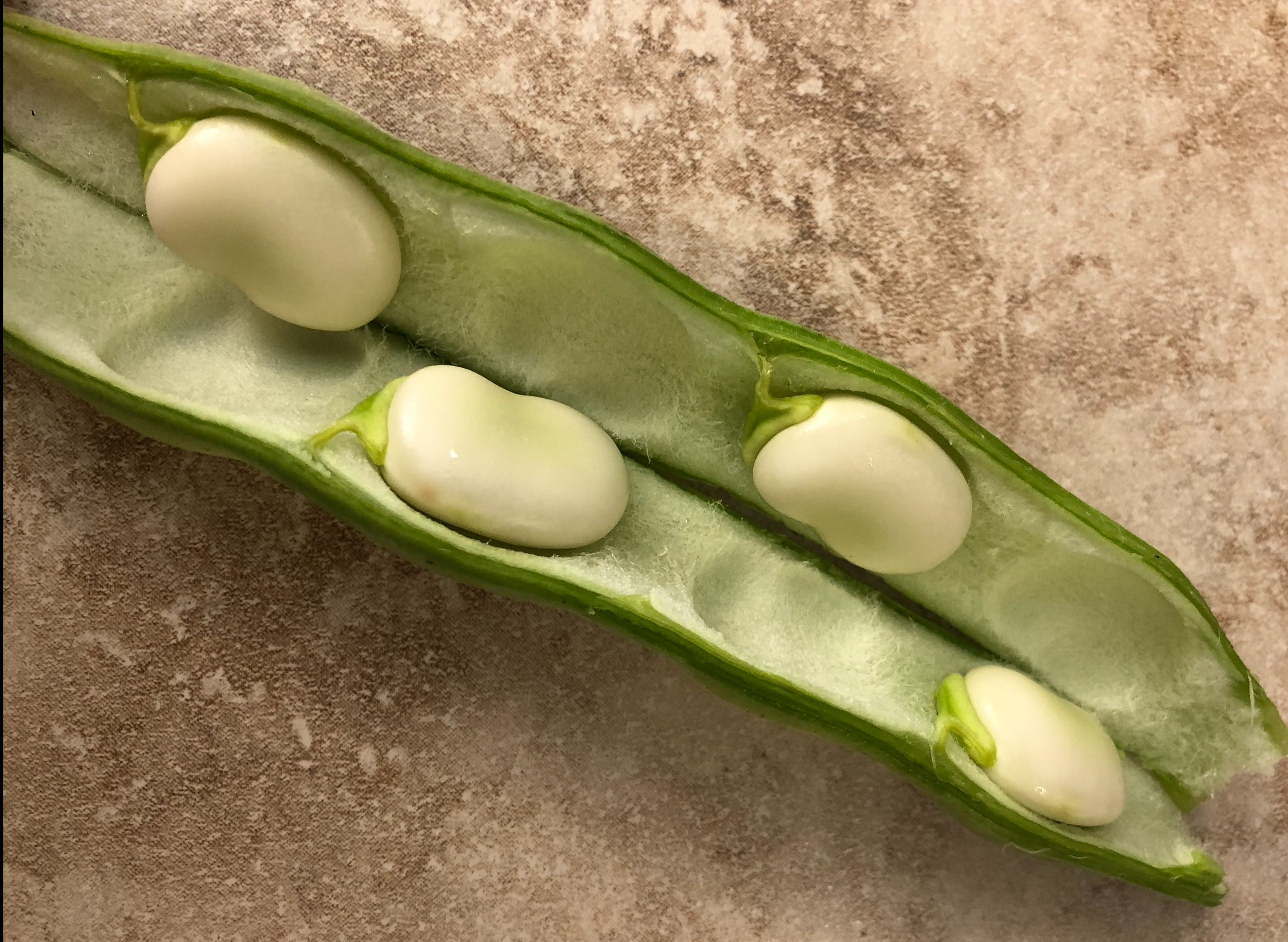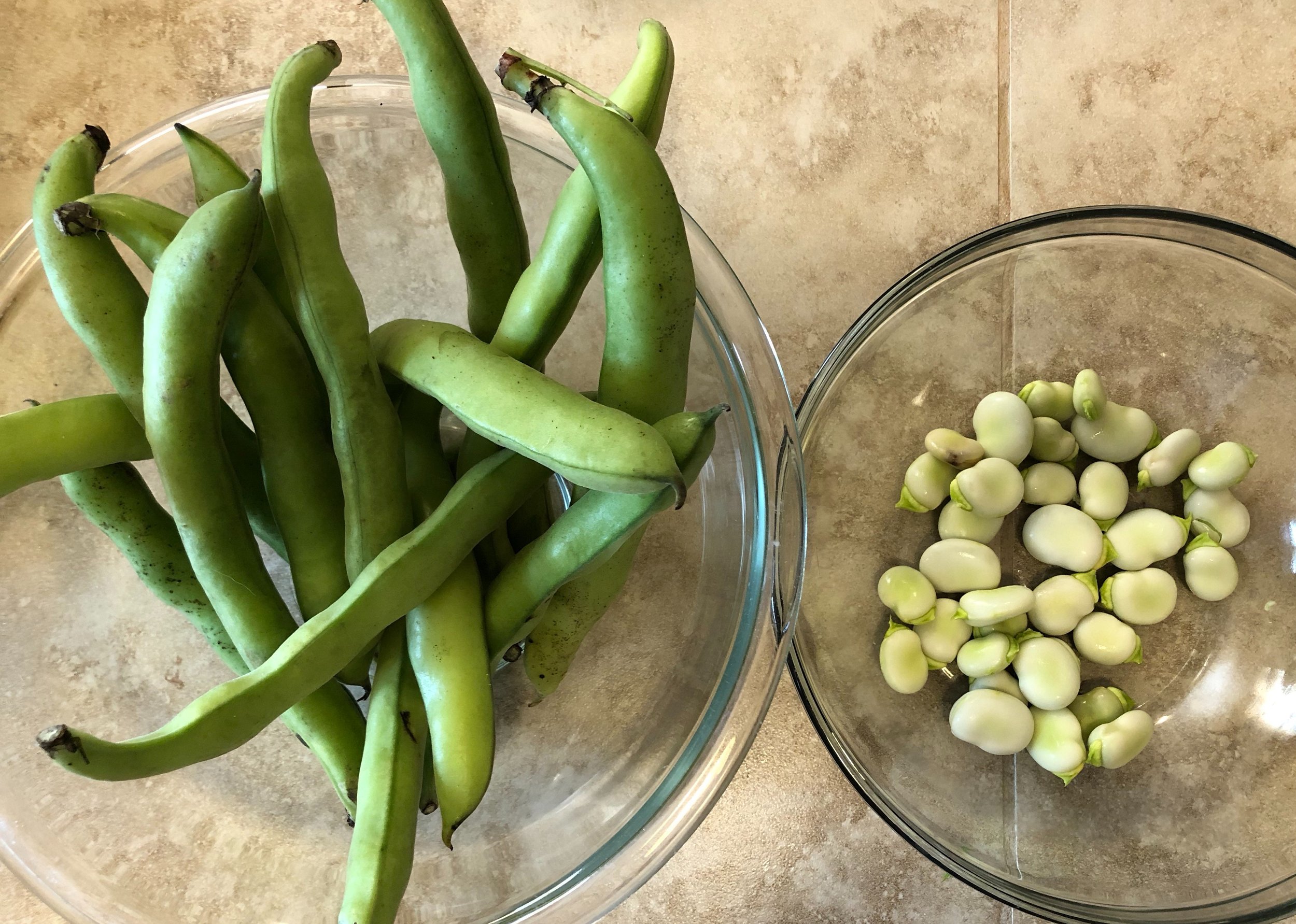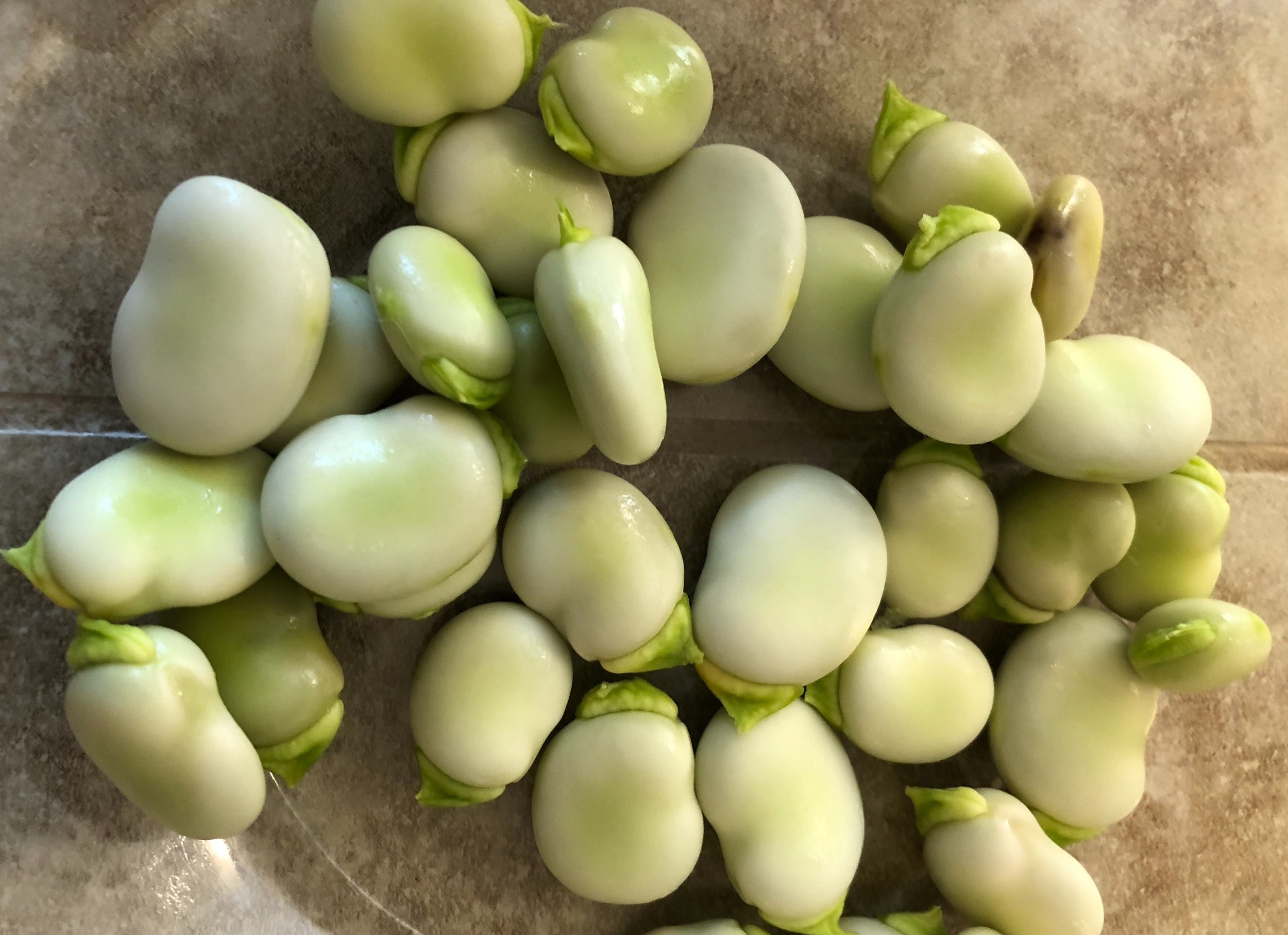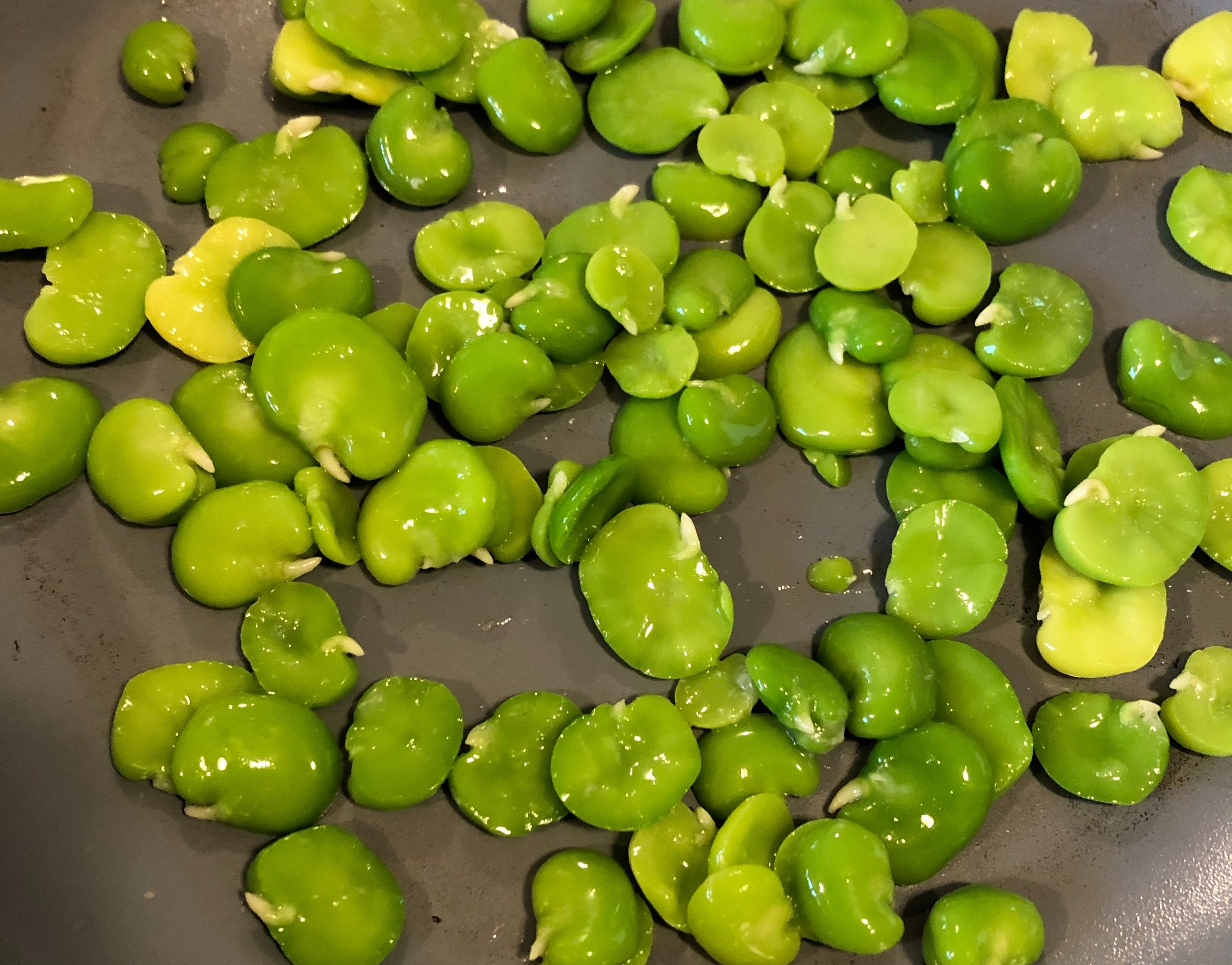Fava Beans
Fava Beans! Ever heard of them?
I knew they existed, and possibly had seen them at a Farmer's Market or two, but I had not have the pleasure to cook and eat them until this Spring.
These long and leathery pods showed up in a produce box I was fortunate enough to be given by a friend and I was delighted for the opportunity to learn more about them.

Fava beans look like an enlarged green bean, with a thick but soft liner inside their pod to nest the seeds.
The starchy, firm, savory seed, or bean, that is consumed from the fava pod is under yet another layer; the white or light green shell comes off to reveal a fluorescent green interior.
Apparently, small, young fava beans can be eaten whole, pod and shell and all, in their raw form. Mature fava beans are grown to a length of six to twelve inches and are more fibrous and therefore are best consumed when shelled, or via a cooking method that will soften them.

The fava beans I came across were in the mature category; long and thick!
After a quick google search on how to cook them I wasted no time breaking open the pods and removing the big white beans. True to my cooking style, however, I only did a quick glance through the basics and figured I could wing it from there...
I blanched the white beans (2 minutes in boiled water and transferred to an ice bath), but didn't really understand why that was the preferred cooking method until I tried to eat one and realized there was a tough skin over the bean. Blanching, per its purpose I found, did the trick to loosen this skin from the green bean beneath; it wrinkled and fell away nicely.

But I must say, this was a tedious task, removing all the skins from the beans. My easily distracted self took two breaks before they were done.
Very quickly I went from two large handfuls of fava bean pods to a mere half cup of edible beans. Yes, small yield.
Oh, and they split in half without me trying. As you can see below.

Yet, they were a delight to eat!
Per the same google search I had seen that a simple saute was a good way to taste the fava bean. So I did just that; in a little olive oil, salt and pepper.
They have a smooth, almost buttery, nutty flavor; some may say they are umami.
I then took my lightly cooked, sauted favas and added them to pasta with homemade pesto for a full meal deal.
I have since looked up other ways to cook and consume fava beans, such as roasting or grilling them whole (love this idea!), pureeing them into sauces and dips, or drying them for snacks and salad toppings.
Other Fun Fava Facts
- Ancient crop
- Not popular in the US
- Likes cold weather
- Used as a cover crop
- High in protein and fiber, like other legumes
- Good source of folic acid, iron, copper, calcium and potassium
References
Food Print: Real Food Encyclopedia; https://foodprint.org/real-food/fava-beans/
Have a Plant: Fruits and Veggies for Better Health; https://fruitsandveggies.org/fruits-and-veggies/fava-beans-nutrition-selection-storage/

